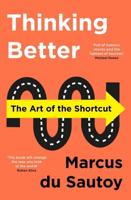Publisher's Synopsis
1. 1 Summary This thesis intends to answer three questions: First, what is a lead market; second, what constitutes a lead market, and third, how companies can harness lead markets to generate global innovations. Considering the international, cross-border diffu- sion of innovations one can observe that a particular technological design such as the facsimile machine, the personal computer or the mobile cellular telephone is often adopted by one country or region much earlier than by other countries which subsequently follow this country, which I will call the lead market. A lead market is defined as a country that adopts an innovation that is subsequently adopted worldwide. When different designs of an innovation compete internationally, the design preferred in the lead market becomes the global dominant design. The study suggests a theoretical explanation for the phenomena of lead markets and collects empirical evidence from a detailed case study of the cellular mobile tele- of an innovation design adopted first phone industry. The international diffusion by the lead market, i. e. subsequent adoption of an innovation design preferred in the lead market by other countries, can be put down to the special market context in the lead market. The market context includes demand preferences, the environ- mental condition and the degree of competition. Multinational firms are often confronted not only with varying market acceptance of new products and processes from country to country, but with national prefer- ences for particular specifications of an innovation, i. e.








